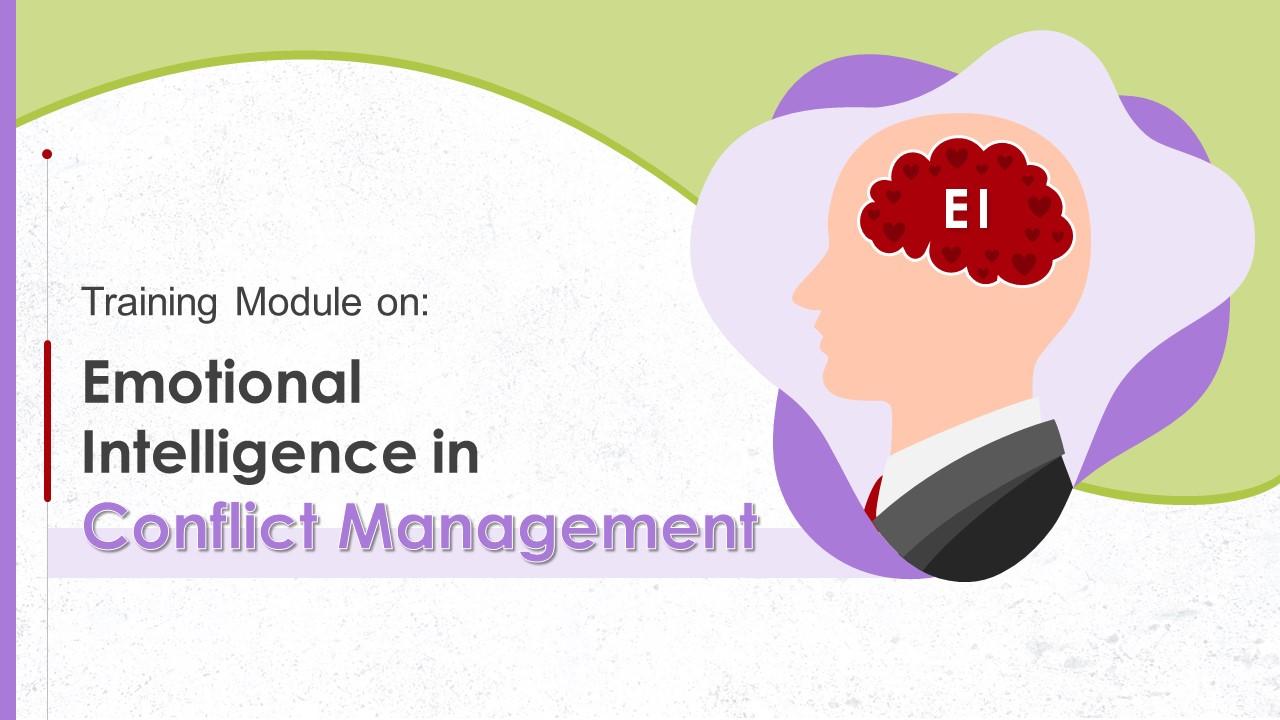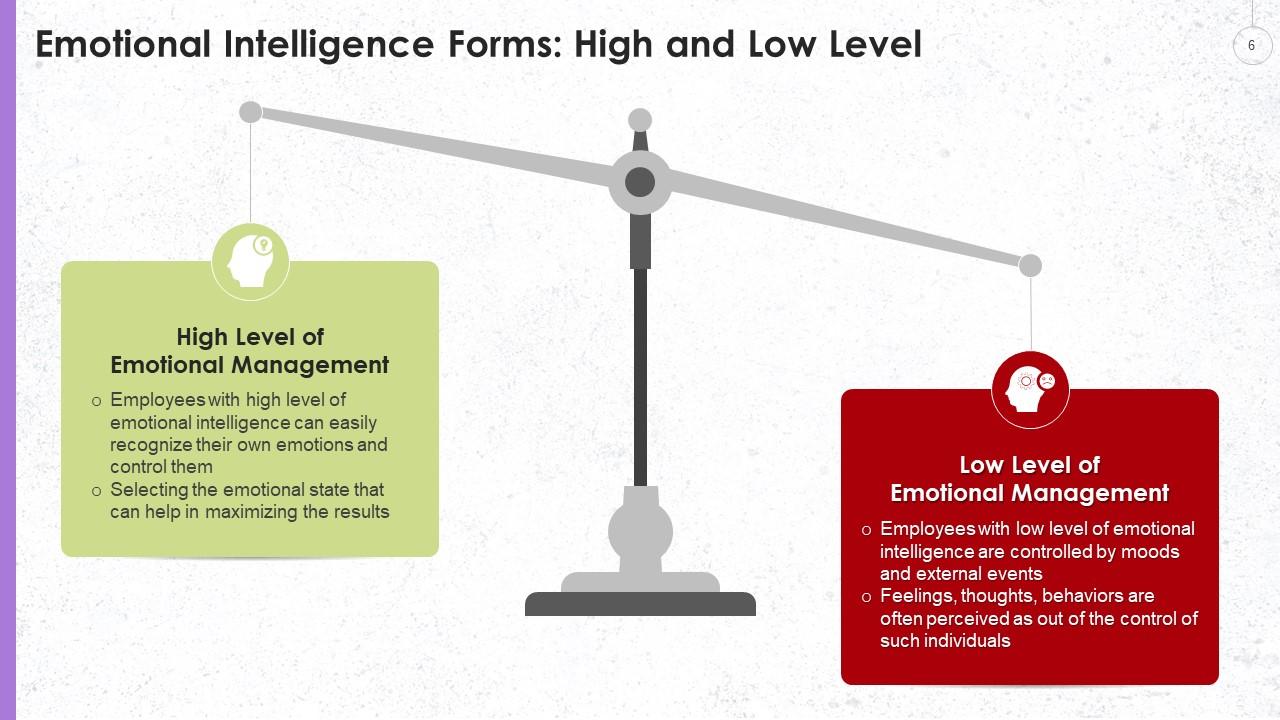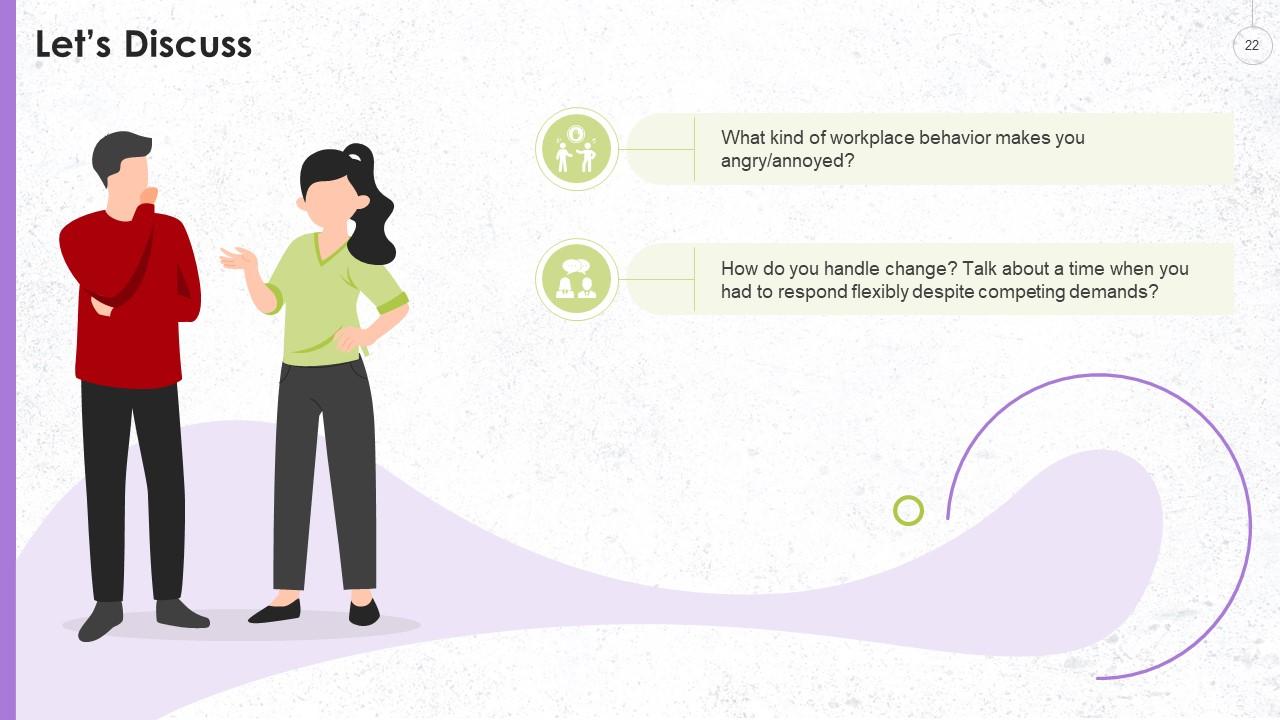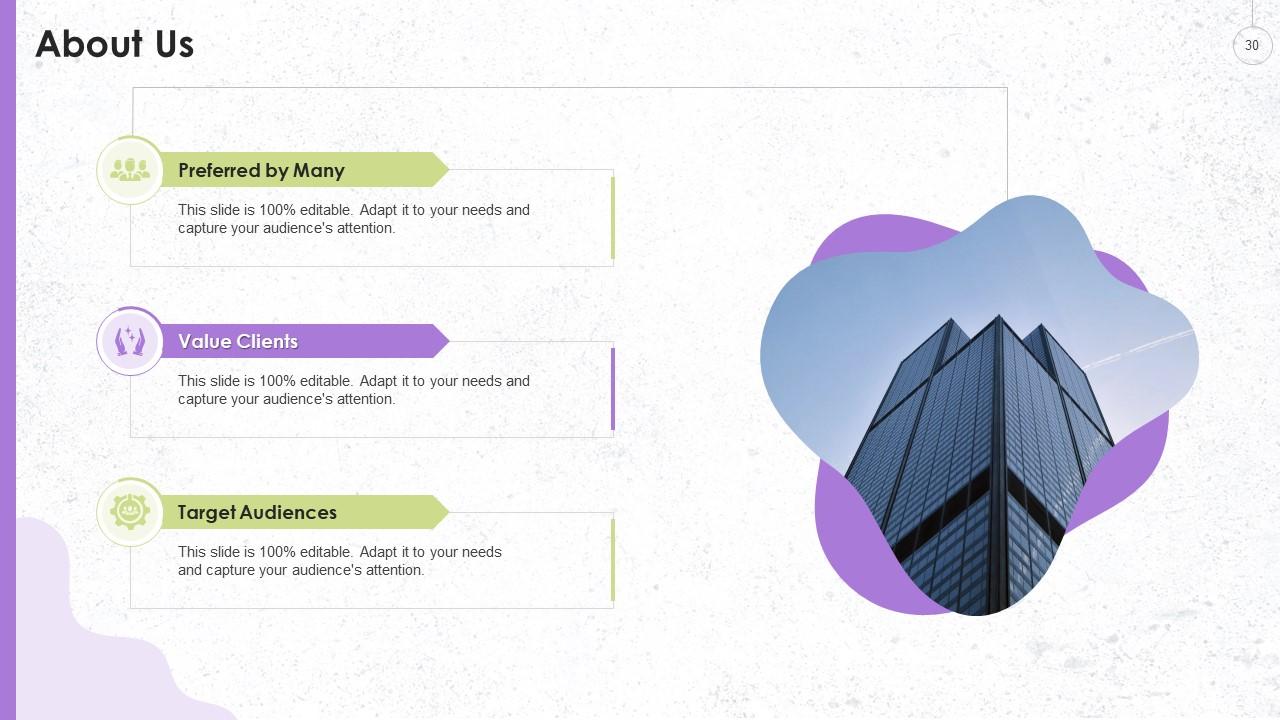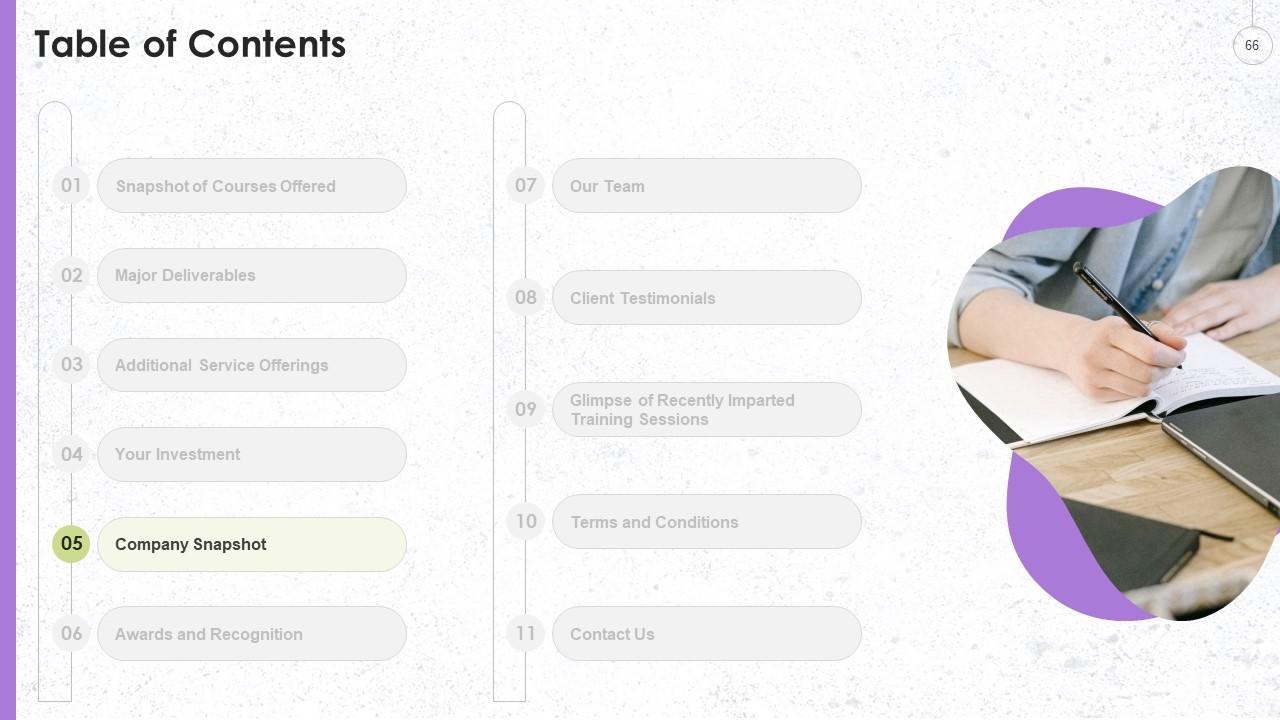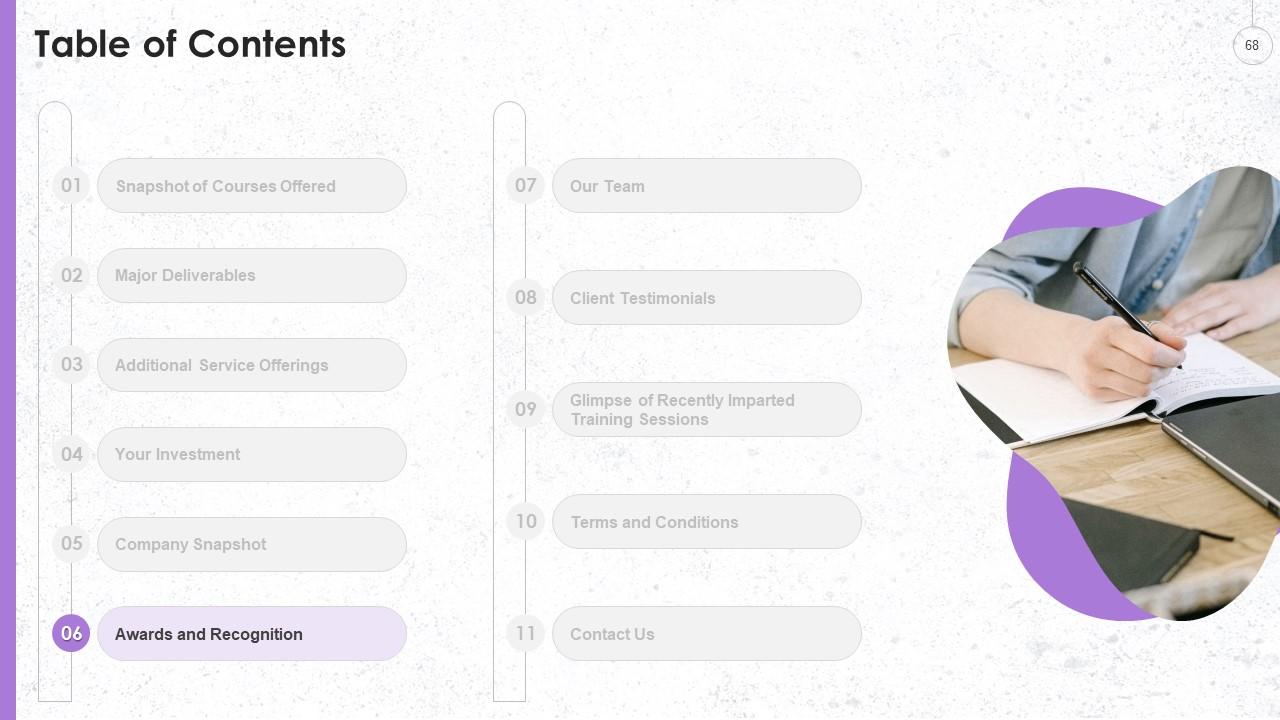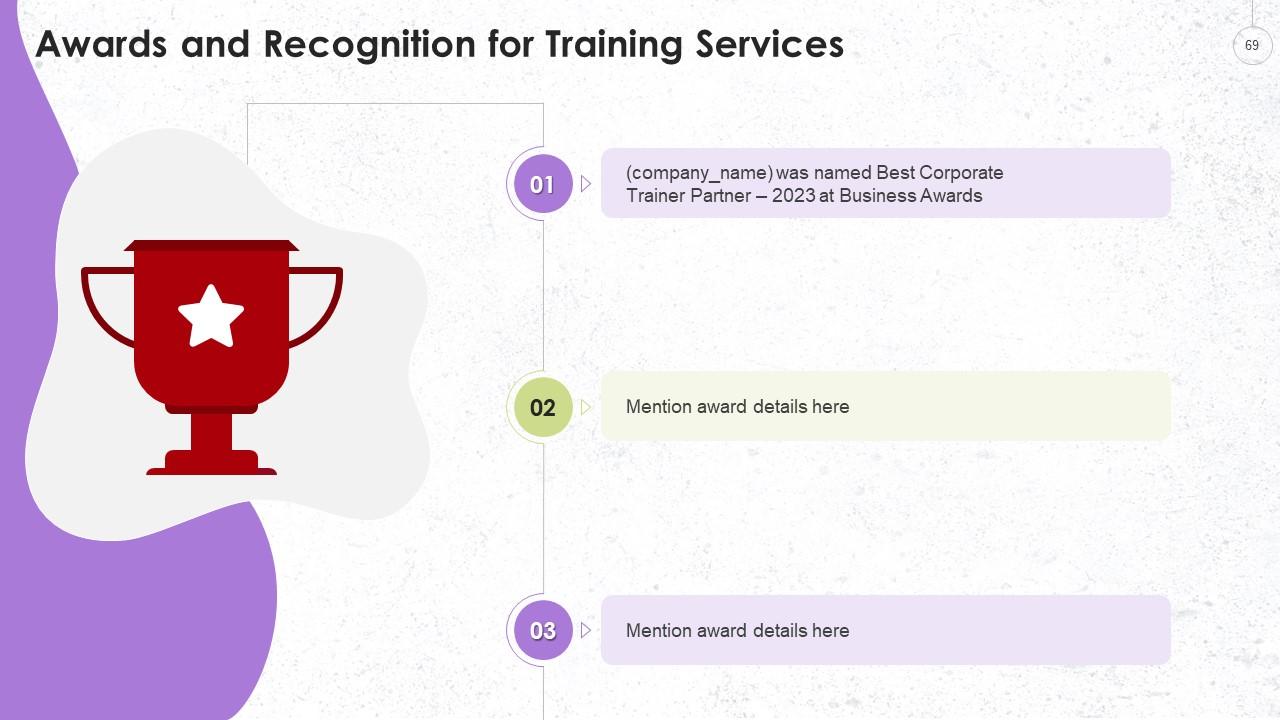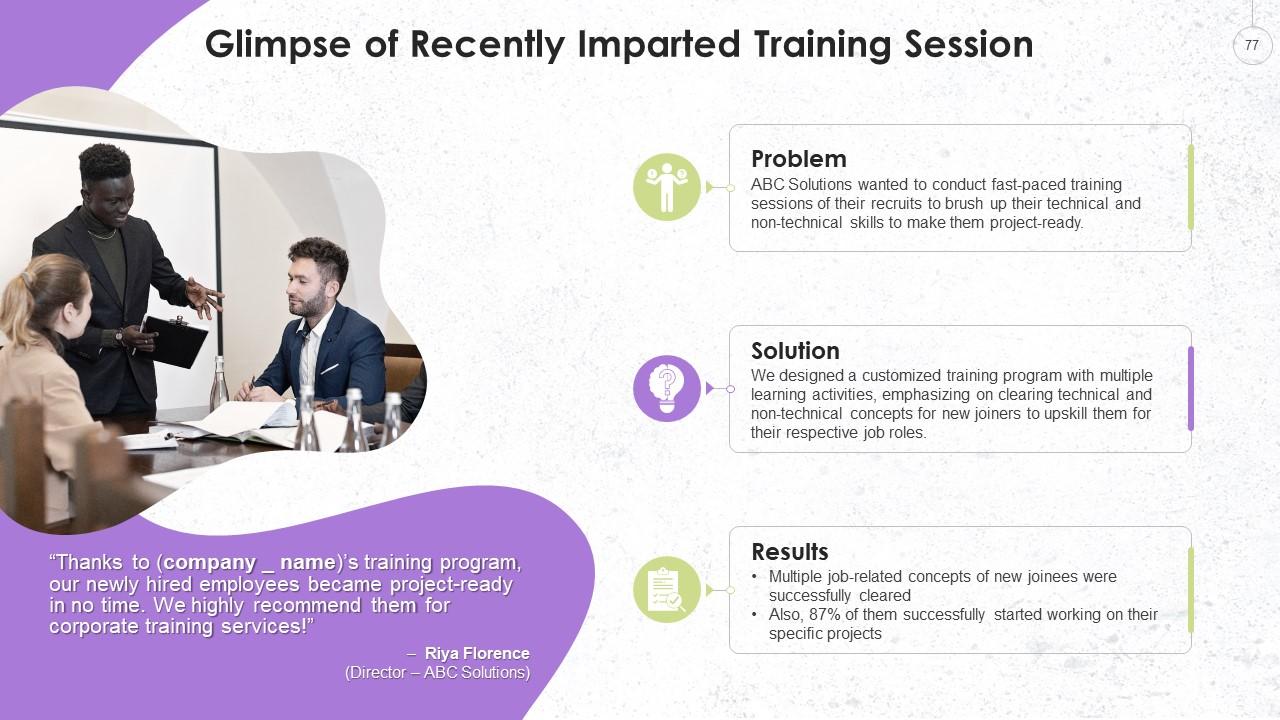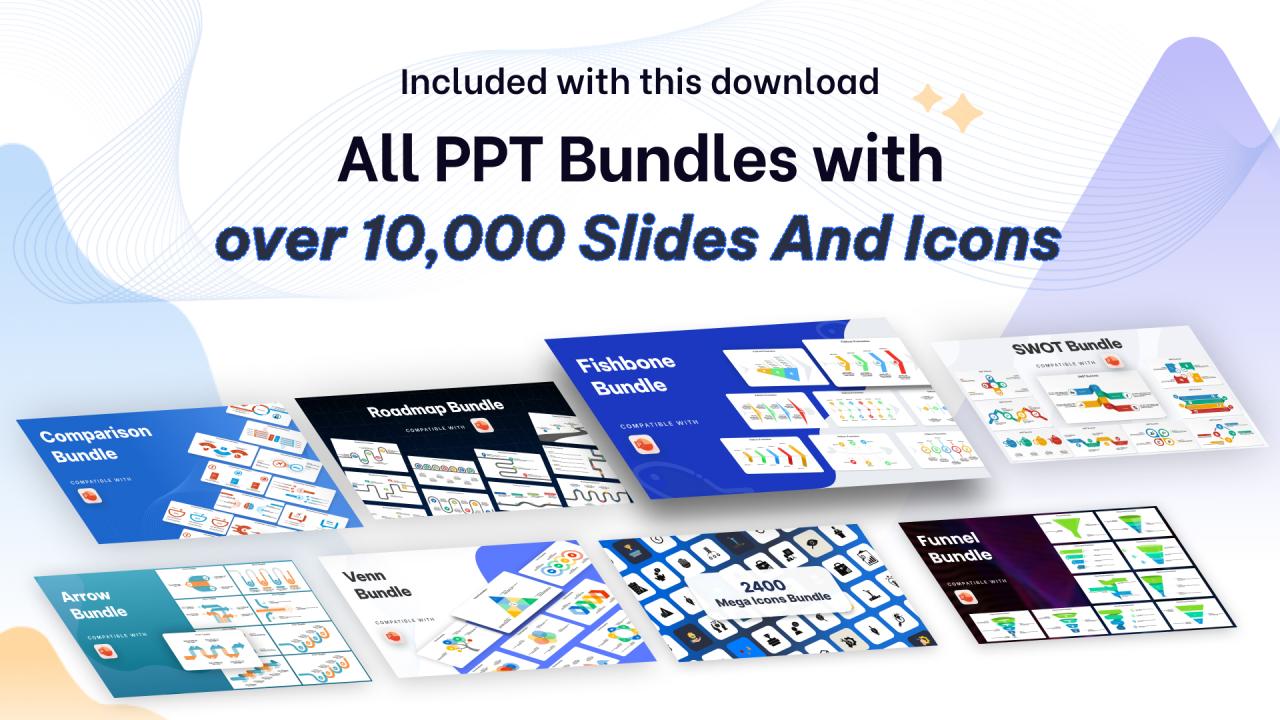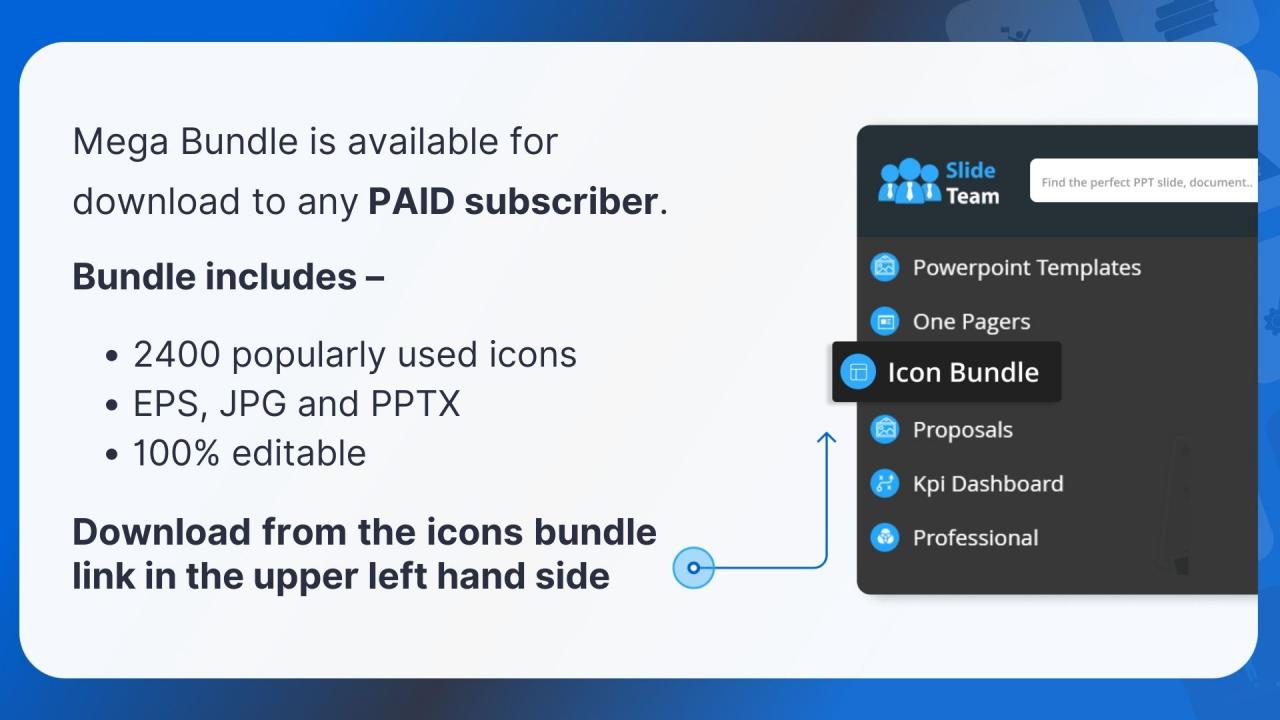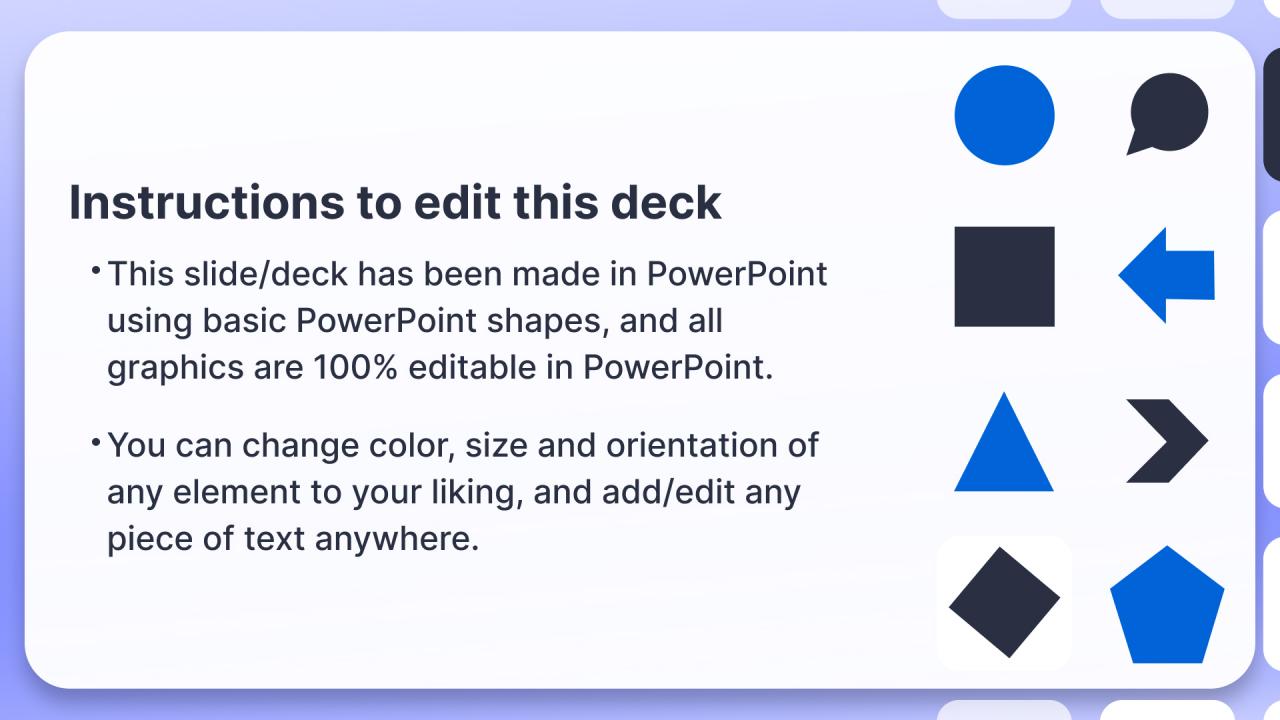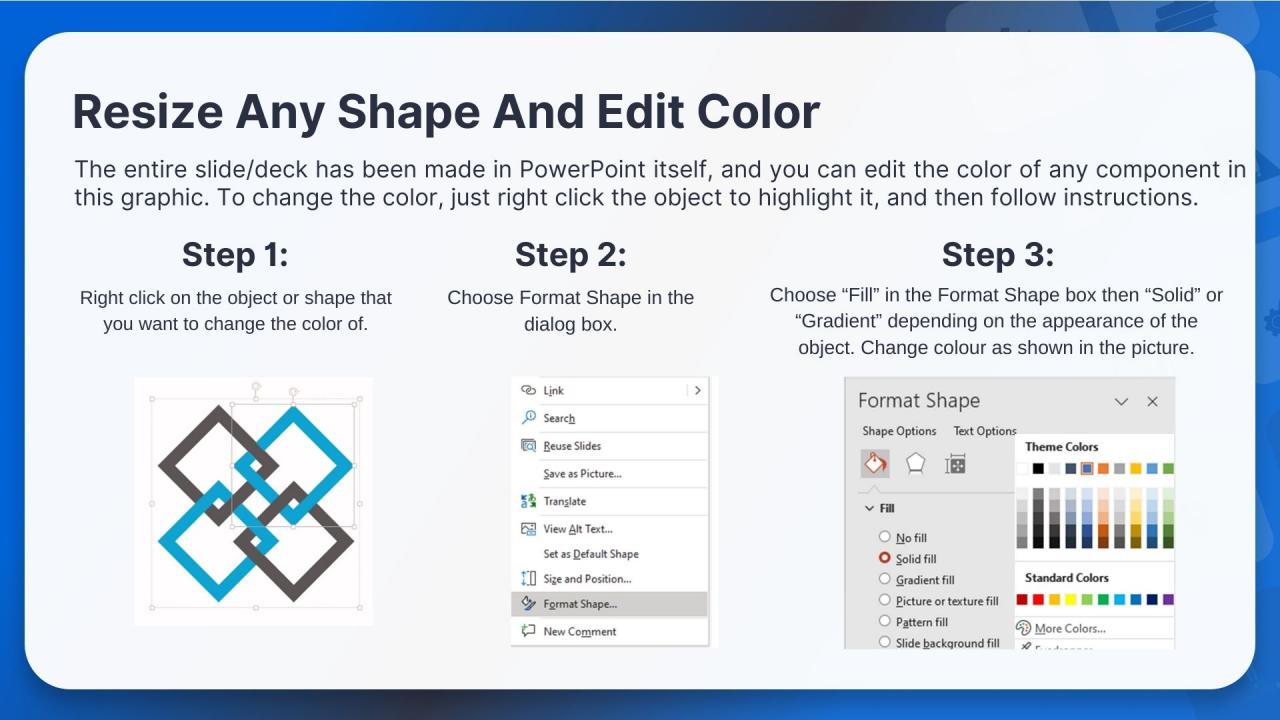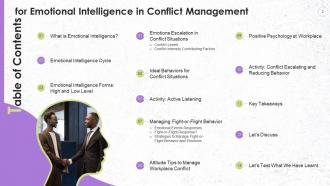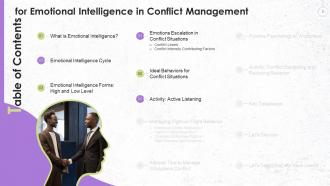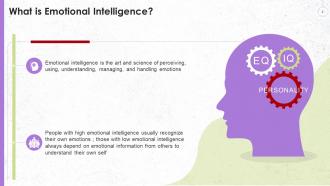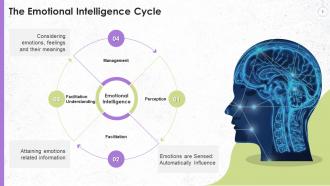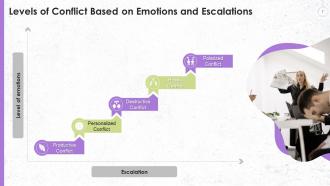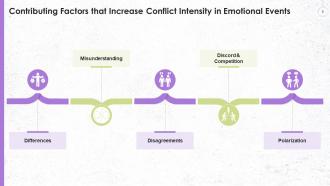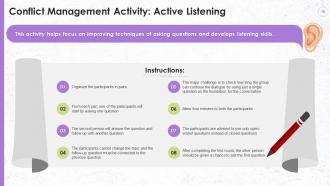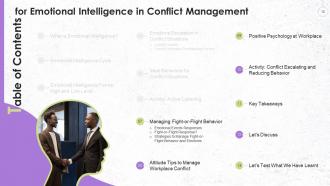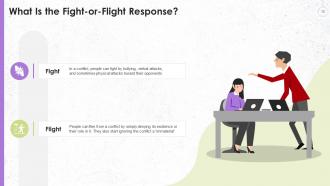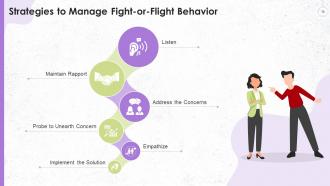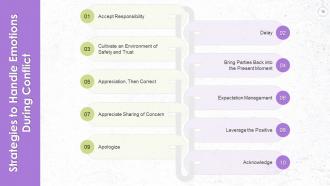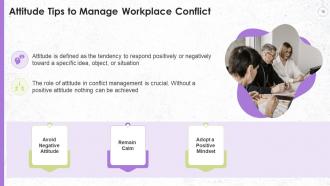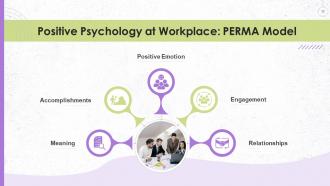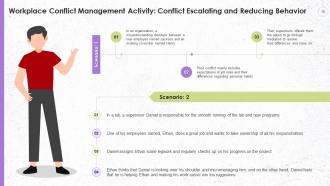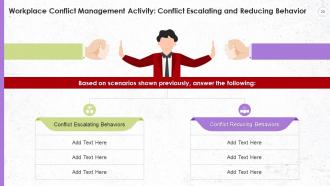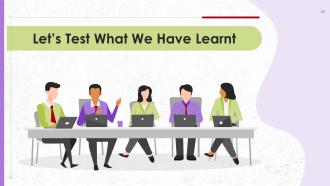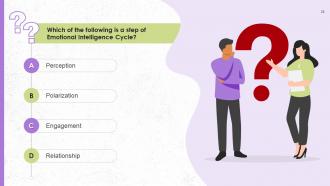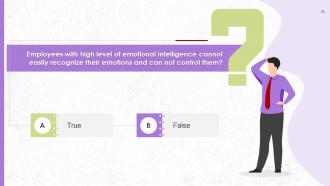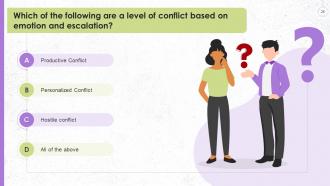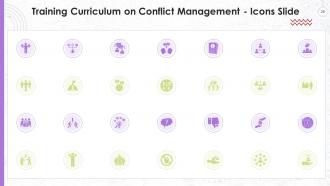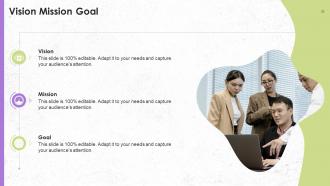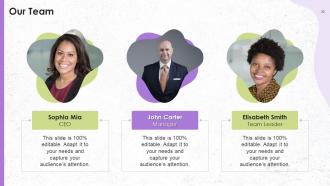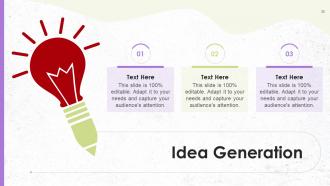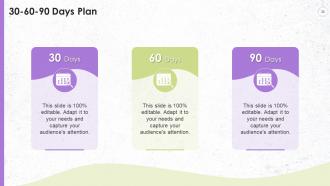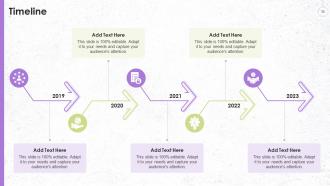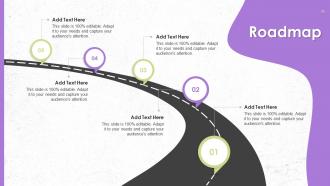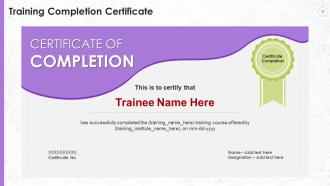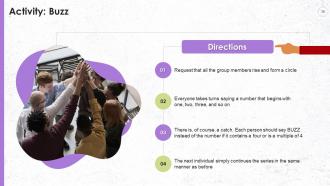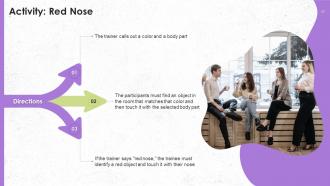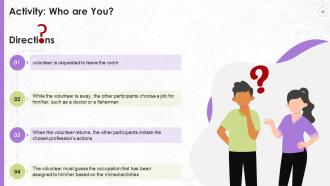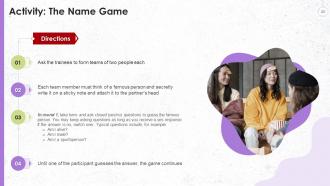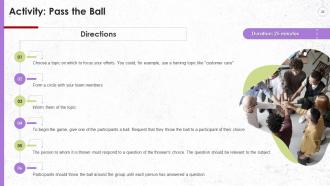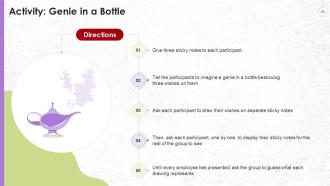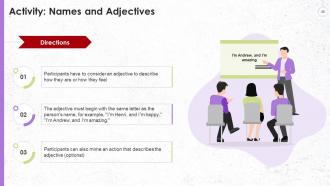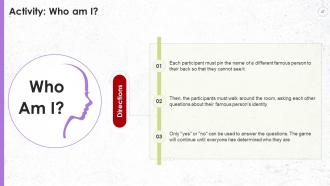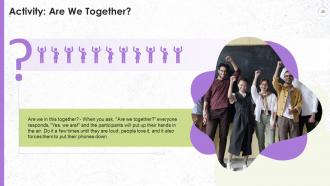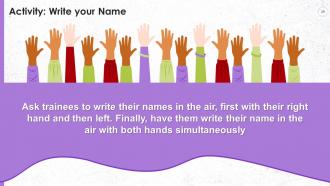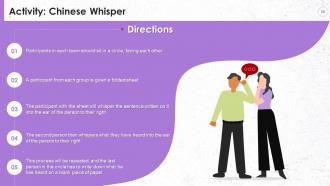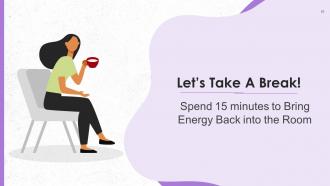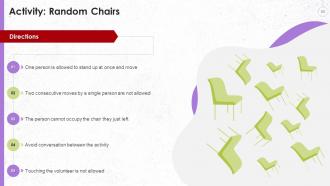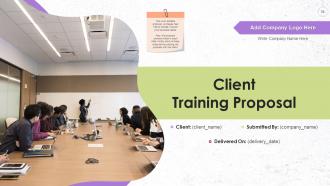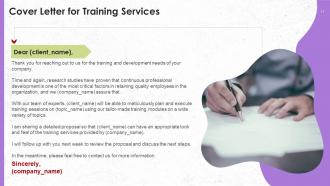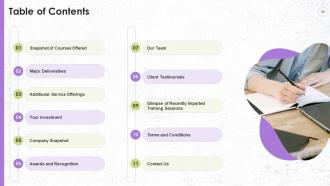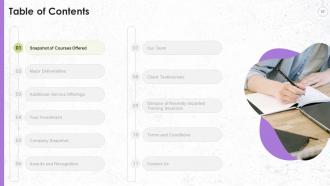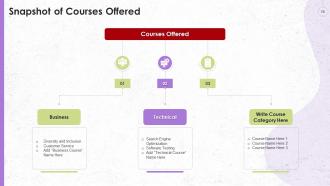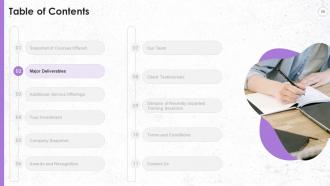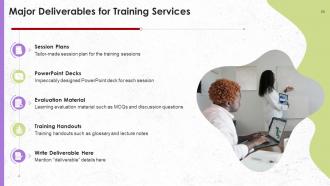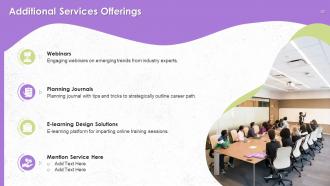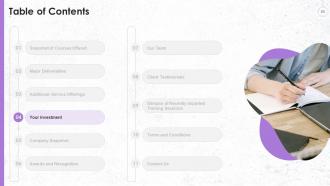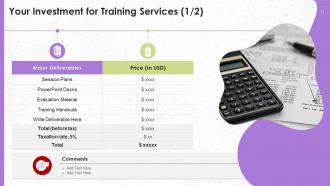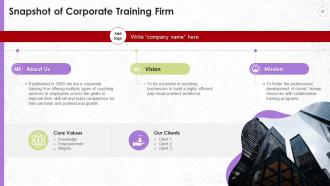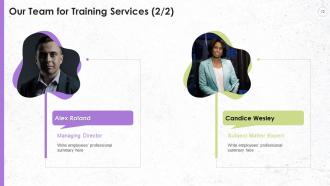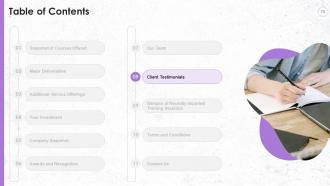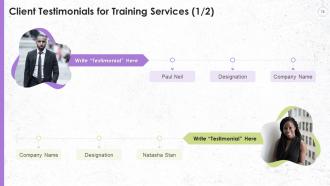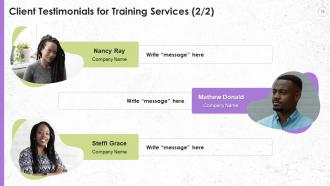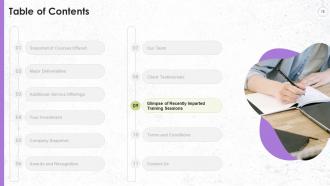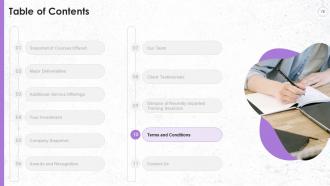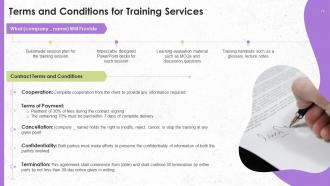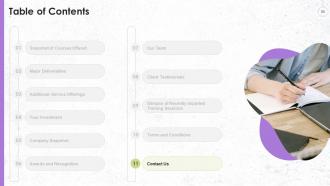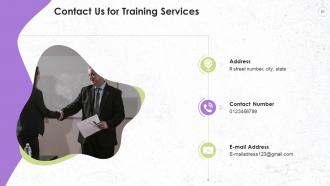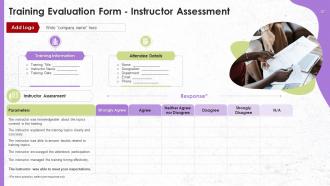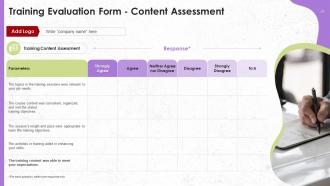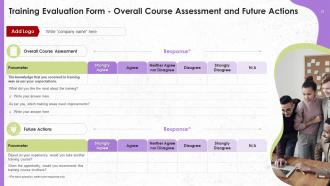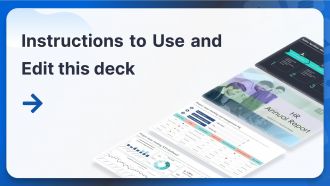Emotional Intelligence In Conflict Management Training Ppt
This training module on Emotional Intelligence in Conflict Management covers the EI cycle and its forms high and low level. It includes details on multiple conflict levels productive conflict, personalized conflict, destructive conflict, hostile conflict, and polarized conflict as well as conflict intensity contributing factors differences, misunderstanding, disagreements, competition, and polarization. It lists the ideal behaviors for conflict situations and has strategies to manage fight-or-flight behavior. Further, it includes attitude tips to manage workplace conflict and PERMA Model to create positive psychology. It also has an activity Conflict Escalating and Reducing Behavior, key takeaways, discussion questions, and MCQs related to the topic. The deck has PPT slides on about us, vision, mission, goal, 30-60-90 days plan, timeline, roadmap, and training completion certificate. It has energizer activities to make the coaching session more interactive. It also includes a client proposal and assessment form for training evaluation.
You must be logged in to download this presentation.
PowerPoint presentation slides
Presenting Training Deck on Emotional Intelligence in Conflict Management. This presentation deck contains 84 well-researched and uniquely designed slides. These slides are 100 percent made in PowerPoint and are compatible with all screen types and monitors. They also support Google Slides. Premium Customer Support available. Suitable for use by managers, employees, and organizations. These slides are easily customizable. You can edit the color, text, icon, and font size to suit your requirements.
People who downloaded this PowerPoint presentation also viewed the following :
Content of this Powerpoint Presentation
Slide 4
This slide illustrates the brief introduction to emotional intelligence. It explains that emotional intelligence is defined as perceiving, using, understanding, managing, and handling emotions.
Slide 5
This slide illustrates different steps of the intelligence cycle such as perception, facilitation, understanding, and management.
Instructor’s Notes:
Different stages of emotional intelligence cycle are as follows:
Stage 1 Perception:
- It is essential to perceive emotions with precision, it also involves understanding signals such as body language and facial expressions
Stage 2 Facilitation:
- The use of emotions helps us in understanding the thinking of the employee and what they are reacting and responding to
Stage 3 Understanding:
- In case an employee is upset and angry, then it is important for the other employees to interpret the reason behind such an emotion
Stage 4 Management:
- Ability to manage emotions in an effective manner is an integral part of emotional intelligence
- Regulating and responding to the emotions of others is an essential aspect of emotional management
Slide 6
This slide showcases two different forms of emotional intelligence that is high level and low level. It explains that employees with high level of emotional intelligence can easily recognize their emotions and control them. Employees with low level of emotional intelligence are controlled by moods and external events.
Slide 7
This slide illustrates levels of conflict based upon emotions and escalations such as productive conflict, personalized conflict, destructive conflict, hostile conflict, and polarized conflict.
Instructor’s Notes:
- Productive Conflict: Productive conflict refers to the exchange of ideas between the employees to reach a solution, is acceptable to all
- Personalized Conflict: This happens when the focus of the discussion shifts from the main topic or issue to the individuals involved in the conflict
- Destructive Conflict: In this scenario, more than one party starts bringing up a past issue unrelated to the current conflict topic. The employee on the receiving end starts feeling like being attacked on several fronts; this creates the ground for a destructive conflict
- Hostile Conflict: If some outside parties are involved for taking validation, then there is the escalation to a hostile conflict
- Polarized Conflict: Polarized conflict occurs when one or more parties refuse to work or communicate with the other parties involved in the situation
Slide 8
This slide illustrates factors that contribute towards conflict intensity such as differences, misunderstanding, disagreements, discard and competition, and polarization.
Instructor’s Notes:
Different factors contributing towards conflict intensity are as follows:
- Differences: Differences in any situation occur when both the parties see the situation from their own perspective, and not through the viewpoint of each other
- Misunderstanding: Misunderstanding occurs when in an ongoing situation, what is understood by one party is different from the other party
- Disagreements: Disagreements occur when conflicting parties see the situation differently, regardless of their understanding of the other person's position and interest
- Discord & Competition: Discord and competition occur when the conflict between two parties causes difficulties for the people involved, even when they are not dealing with the original conflict. Personal attack on each other’s integrity emerges as the flashpoint of another, new conflict
- Polarization: Polarization occurs with intense emotions and leads to negative behavior. At this stage, only motive that remains is to end the conflict by any means possible
Slide 9
This slide showcases ideal behavior to be adopted for interaction at the workplace These are a positive attitude, acting ethically, being reliable, taking responsibility, staying calm and showing respect. It also includes identifying the causes of the problem, and help. If employees can carry this out, conflicts will be a rarity at the workplace.
Instructor’s Notes:
Ideal behaviors at the workplace to address conflicts are as follows:
Have Positive Attitude:
- Everybody enjoys enjoy working with employees who are motivated, with a sunny outlook to life
- If employees face any challenge at work, they should try to conquer these, instead of complaining
- Providing positive feedback to their colleagues and praising them for their personal and professional growth is a habit that all should cultivate
Act Ethically:
- It is important to choose between right and wrong at workplace and also maintain strong morals by:
- Following organizational rules and policies
- Report questionable behavior, suspicious actions, or any violation of law or workplace ethics
- Always take responsibility for your actions
Plan Ahead:
- The company should be rigorous in its selection process, which could help the organization prune out potentially difficult employees
- The hiring manager should go for a background check for each new employee
- Behavioral interviews of every new employee can help the company identify all the red flags that can lead to the negative behavior of employees
Be Reliable:
- It is important for employees to do good quality work and become reliable assets for other employees and managers in the company
- Once the manager can rely on their employees for high-quality work, they can give them more responsibilities and independence
Take Responsibility:
- It is important for employees to take responsibility for their wrongdoings or acknowledge the mistakes, missed deadlines, or wrong decisions and apologize for these; it is also important to right things right
Stay Calm and Show Respect:
- It is important to stay calm and avoid criticisms and judgments
- Always maintain a balanced body language and a neutral tone
- Always focus on facts and maintain an honest, professional, and respectful attitude
Identify the Causes of the Problem:
- It is important to identify the causes for employees' behavior as it varies from employee to employee
- Employee problems could be related to:
- Workplace Issues
- Professional relationship with other employees
- Personal issues that prevent the employee from performing their job properly
- It is the leader's responsibility to find the root cause of the problem and solve it
Help Others:
- Ask other employees if they require any help regarding any project
- Helping their employees and working together as a team leads to the improved productivity of the entire department
- Managers also consider such employees for leadership roles
Slide 10
This slide illustrates the active listening conflict management activity. It also contains required instructions for successful execution.
Instructor’s Notes:
At the end of both rounds, start a discussion regarding the activity. You can ask questions such as:
- How difficult was this activity?
- What are the learnings?
- Why use open-ended questions during a conflict?
- How will the questioning technique help during a conflict?
Slide 11
This slide illustrates varying responses to emotional events such as fight, flight, freeze, and fall.
Slide 13
This slide showcases the two different types of responses to workplace conflict that is fight behavior and flight behavior.
Slide 14
This slide showcases strategies to manage fight or flight conflict behavior such as maintain rapport, listen, address concern, probe to uncover concern, empathize, and implement the solution or move on.
Instructor’s Notes:
Strategies to manage fight or flight conflict behavior are as follows:
Listen:
- If one party is demonstrating fighting behavior during the conflict, the best approach is to let them speak and express their initial burst of anger
- Keep your face and body language neutral throughout the conversation
Maintain Rapport:
- When the initial burst of one party is over, try to paraphrase the information presented from them; the aim is to uncover their concerns with patience, not with force
- Maintain a calm and confident position while solving the issue
Address the Concerns:
- After processing the issue, try to address the concern by qualifying and quantifying the complete information
- It is important to maintain a rapport with the conflicting parties during the interaction
- Do not show any signs of aggressive body language or eye contact that could lead to fight behavior
Probe to Uncover Concern:
- It is important to ask questions to understand the real concern
Empathize:
- Also, make sure convey that you understand their feelings when concluding the interaction and that you also empathize what their feelings are at the time of concluding the interaction
Implement the Solution or Move on:
- In the end, provide both parties with two or three choices. Ask them to choose one and implement the solution
Slide 15
This slide illustrates strategies for handling emotions during conflict such as responsibility during conflict, delay, cultivate an environment of safety and trust, bring parties back into the present moment, appreciation, then correction, expectation management, leverage positive, sincere apology, acknowledgement, and a reiteration that all stakeholders, even during times of conflict, are on the same side.
Instructor’s Notes:
Strategies to handle emotions during conflict are as follows:
Accept Responsibility:
- During the conflict, it is important for both the parties to take responsibility for their actions in the conflict. This helps build trust in the relationship, and goes a long way in the ultimate resolution of the conflict, will help to build the relationship to resolve the conflict
Delay:
- During the conflict, it is essential to put things aside for some time and give both parties time to cool down
Cultivate an Environment of Safety and Trust:
- During the conflict, it is important to create a safe and trusted environment for both parties to express their emotions in a constructive way. This will help the conflict resolving committee to understand the reason that led to it\
Bring Parties back into the Present Moment:
- During the conflict, if both parties are stuck in past situations and start blaming each other for all the wrongdoings, the mediator needs to pull the parties back into the present moment
- Expressing emotions is important for any conflict to be productive
Appreciation, Then Correct:
- It is important to balance the issue with both positive and negative aspects during the conflict
Expectation Management:
- At the time of conflict, if one of the parties know about the outcome of their actions then they can manage their emotion according to the situation
Appreciate Sharing of Concern:
- It is important to appreciate others for sharing their issues and thoughts
- This helps in building trust between the employees and the company
- Using expressions like: “I trust you and will help you work this through”, can help establish confidence between the warring parties
Leverage the Positive:
- It is important to focus on the positive side of the conflict that will help to balance the conflict situation
Apologize:
- Acknowledgment and apology for what they did plays an important role in reducing negative emotions during a tough conversation and managing conflict
Acknowledge:
- During a conflict, it is important to acknowledge and understand things from the other person's point of view
- It will help in resolving the issues in a better way
Slide 16
This slide showcases ideal attitudes suitable for conflict management. One should stay calm, adopt a positive mindset and shun negativity. It also explains that the role of attitude in conflict management is crucial.
Instructor’s Notes:
Remain Calm:
- It is important to stay calm in any situation and avoid a negative mindset
- It is important to develop a
- Do not harp on the issue for long
- Either try to solve it or forgive the other person and move on
Have Positive Mindset:
- Positive mindset helps to deal with conflicts in sensible, realistic
- A positive mindset always leads to resolving conflict and moving on
Avoid Negative Attitude:
- Conflicts can spoil the environment and make the person restless and anxious
- The person's attitude should always be towards resolving the conflict
- Simply accepting the mistake and saying sorry helps to resolve major arguments and conflicts
- One negative mind is all it takes to create conflict and unrest
Slide 17
This slide showcases the PERMA framework to inculcate positive psychology in the organization to minimize conflicts. The major components of the model are positive emotion, engagement, relationships, meaning, and accomplishments.
Instructor’s Notes:
The major components of the PERMA model are:
Positive Emotion:
- With positive emotions, employees feel happy, set higher goals, and persist these with greater tenacity
- Employees with less stress and fatigue show better team cooperation and problem-solving
Engagement:
- Use employees' strengths to improve their engagement at the workplace
Relationships:
- Good relationship among the employees leads to a better work environment
Meaning:
- Employees should always look for a bigger purpose at the workplace that could lead to a happier and more content professional life; if this balance is lost, focusing on salaries and jobs is futile
Accomplishments:
- The company needs to appreciate and reward its employees' accomplishments to boost their self-esteem and confidence
Slide 18 to 20
These slides contain the multiple role-play scenarios that trainer can use to conduct workplace conflict management activity.
Slide 21
This slide lists the key takeaways from the training session on Emotional Intelligence in Conflict Management. A trainer can use it to highlight essential concepts of the session to trainees.
Slide 39 to 53
These slides contain energizer activities to engage the audience of the training session.
Slide 54 to 81
These slides contain a training proposal covering what the company providing corporate training can accomplish for the client.
Slide 82 to 84
These slides include a training evaluation form for instructor, content and course assessment.
Emotional Intelligence In Conflict Management Training Ppt with all 89 slides:
Use our Emotional Intelligence In Conflict Management Training Ppt to effectively help you save your valuable time. They are readymade to fit into any presentation structure.
-
I'm happy to discover your PowerPoint presentations and templates. They met my expectations precisely. Very innovative!
-
My team has been relying on SlideTeam’s professional PPT designs for a while now. It has greatly sped up quality work at my organization. So thanks!


